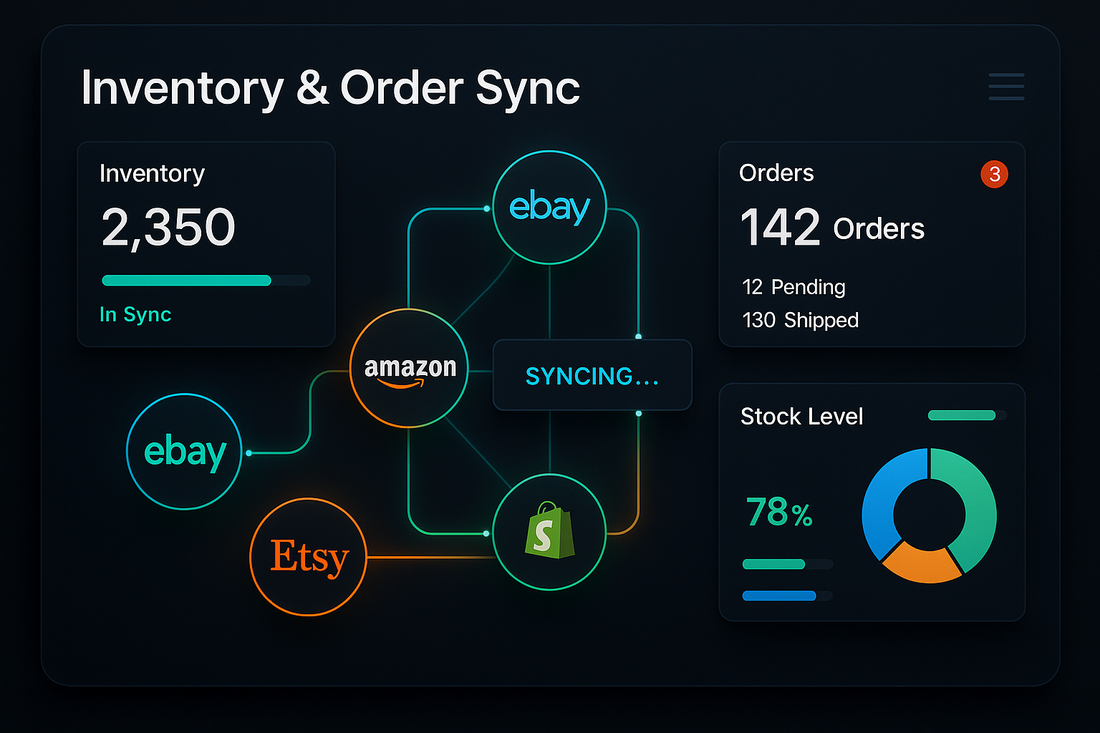
Navigating Multi-Channel Software: Finding the Right Fit Beyond Linnworks
Share
Introduction
Running a multi-channel marketplace business is no small feat. As your sales grow, so does the complexity of managing inventory, orders, and customer communication across platforms like eBay, Amazon, and Etsy. Naturally, many sellers look for software solutions that can streamline operations and save time.
If you’re feeling like your current platform is slowing you down or getting costly, you’re not alone. The tech landscape evolves quickly and finding the right fit for your business is key to staying competitive. Whether you’re looking for better speed, easier integration, or more scalable pricing, there are options out there designed to help sellers just like you.
In this article, we’ll explore some of the leading multi-channel software platforms recommended by eBay’s official solution providers. This will help you understand your choices and find a solution that suits your unique business needs.
Why Choosing the Right Multi-Channel Software Matters
Managing orders and inventory across multiple marketplaces can quickly become overwhelming without the right tools. Software that syncs your sales channels, updates stock in real time, and automates repetitive tasks can make or break your daily operations. But not all platforms are created equal.
Here’s what to look for when choosing your next multi-channel software:
- Ease of use: You want an interface that’s intuitive so your team spends less time troubleshooting and more time growing sales.
- Integration capabilities: The software should connect seamlessly with all your selling platforms, shipping providers, and accounting tools.
- Scalability: Your solution needs to grow with your business, offering pricing and features that fit your volume and complexity.
- Support and community: Responsive customer service and an active user community can save you headaches when challenges arise.
Top eBay Solution Provider Alternatives to Consider
Here are several highly regarded multi-channel software platforms endorsed by eBay and widely used by marketplace sellers:
1. ChannelAdvisor
Known for enterprise-level features, ChannelAdvisor is a powerful tool for sellers looking to expand across dozens of marketplaces and advertising channels. It offers robust automation and deep analytics, perfect for sellers with complex catalogues and global ambitions.
2. Selro
Selro offers a user-friendly platform with tools to manage orders, inventory, and shipping across multiple channels. It’s especially popular with mid-sized sellers looking for affordability without sacrificing essential features.
3. InkFrog
InkFrog is a great option for eBay-focused sellers. It combines listing management, order tracking, and customer messaging into one platform designed to streamline everyday tasks.
4. Ecomdash (by Constant Contact)
Ecomdash provides strong inventory management features with integrations for marketplaces, shopping carts, and shipping services. It’s a flexible choice for sellers who need multi-channel sync without complexity overload.
5. Linnworks
While you’re considering moving away from Linnworks, it’s worth remembering it remains a popular choice for many sellers due to its extensive marketplace integrations and automation tools.
6. Veeqo
Veeqo offers real-time inventory sync and shipping management across popular marketplaces. It’s geared toward sellers focused on efficiency with easy-to-use dashboards.
7. Sellbrite
Owned by GoDaddy, Sellbrite is designed with small to medium-sized sellers in mind. It’s a straightforward solution for listing, inventory, and order management across multiple channels.
8. ChannelGrabber
ChannelGrabber is a budget-friendly option with essential features for multi-channel order and stock management. It’s suitable for sellers looking to optimize without investing heavily upfront.
How to Transition Smoothly Without Disruption
Switching your multi-channel software can feel daunting but proper planning can make it a smooth process. Here are some practical tips:
- Map your current processes: Document how you manage orders, stock, returns, and reporting now. This helps identify must-have features.
- Test integrations: Before fully committing, run a trial to ensure the software connects well with your marketplaces and shipping providers.
- Data migration: Back up your data and understand how to transfer listings, inventory, and customer info securely.
- Train your team: Make sure everyone is comfortable with the new system before going live to avoid operational hiccups.
- Keep communication open: Notify your customers if any changes might affect order processing times during the switch.
FAQs
Q: Can I use multi-channel software without a large budget?
Yes, many platforms offer tiered pricing or pay-as-you-grow plans that accommodate small to medium sellers.
Q: Will changing software affect my current listings or sales?
With careful migration and testing, disruptions can be minimal. Always do trials and backups.
Q: How do I know which features I really need?
Focus on your biggest pain points first—whether that’s inventory syncing, order automation, or reporting. Choose software that addresses these effectively.
Conclusion
Choosing the right multi-channel software is a strategic move that can free up your time and unlock growth opportunities. By exploring eBay’s recommended solutions, you can find a platform tailored to your business size, sales volume, and goals. Remember, the perfect tech stack isn’t the flashiest or most expensive but the one that works best for you day in and day out.
If you’re ready to improve efficiency and grow smarter, now’s the time to explore these options and take control of your marketplace business.
Don’t forget to subscribe to our 30 Day Newsletter for actionable tips to upgrade your multi-channel marketplace business one step at a time.
